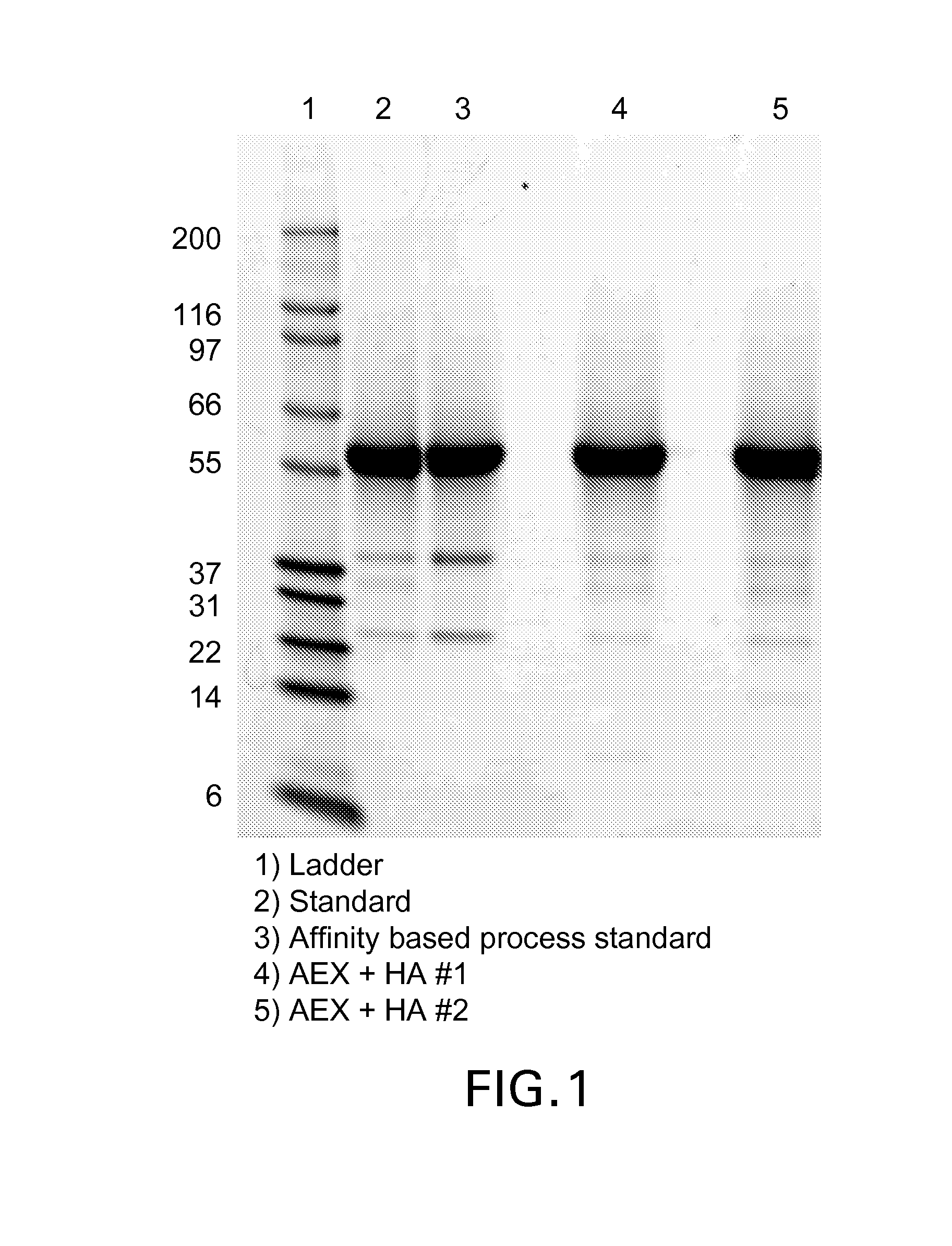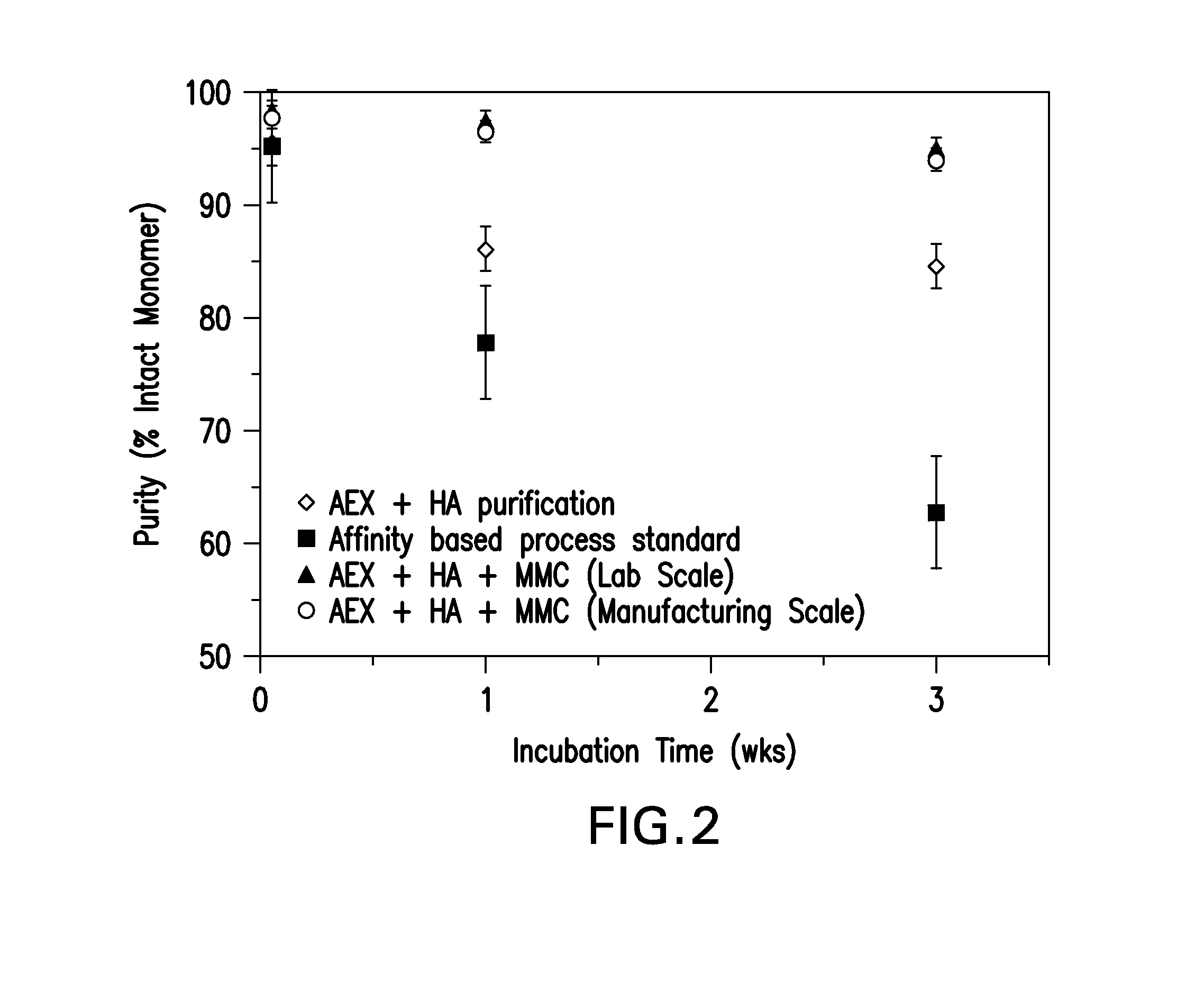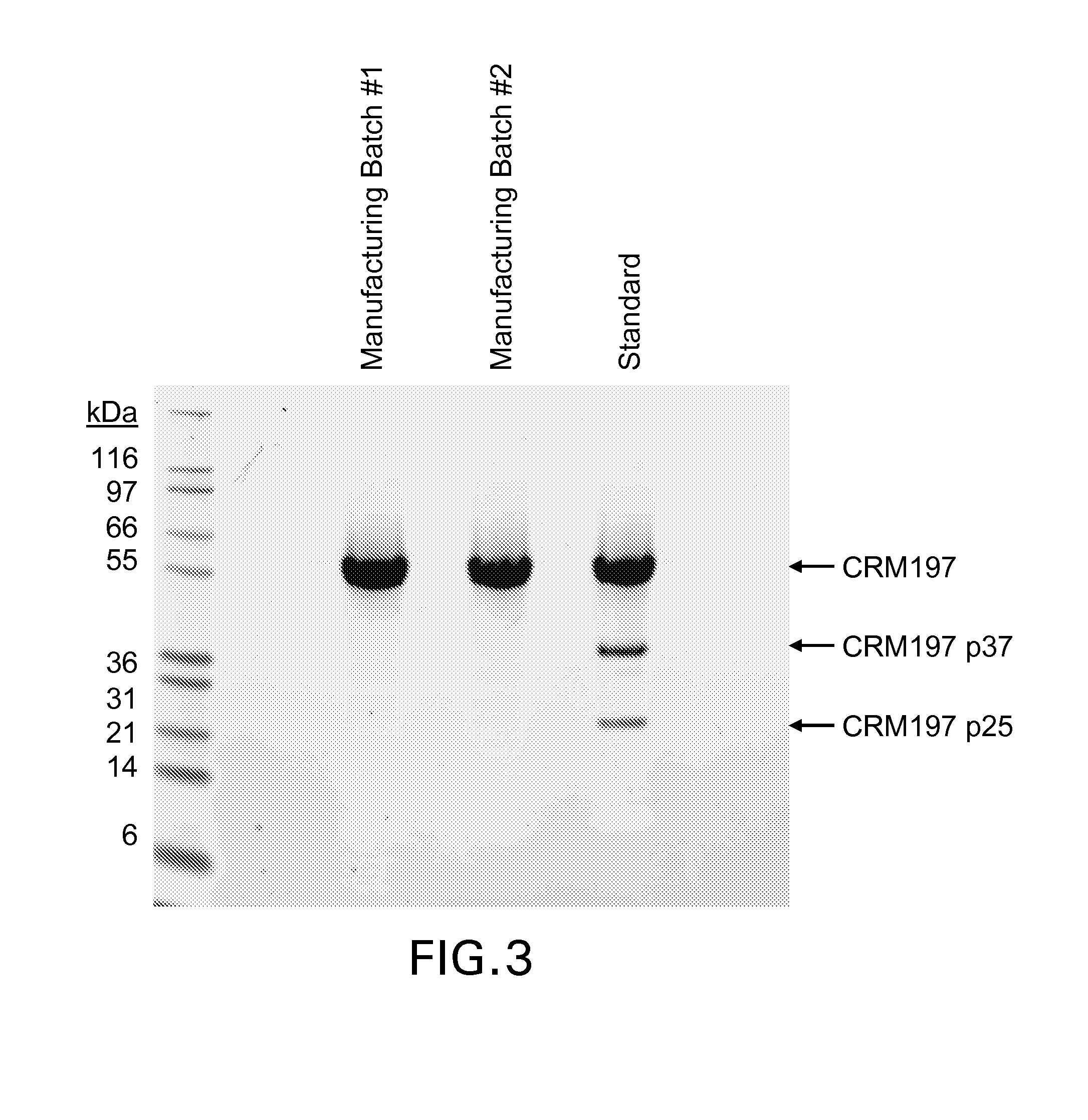Methods of purification of native or mutant forms of diphtheria toxin
- Summary
- Abstract
- Description
- Claims
- Application Information
AI Technical Summary
Benefits of technology
Problems solved by technology
Method used
Image
Examples
example 1
Purification using Hydroxyapatite Chromatography
[0137]The suitability of hydroxyapatite chromatography was tested. A standard anion-exchange chromatography step was included prior to hydroxyapatite chromatography to increase protein purity to ≧90% and reduce endotoxin.
[0138]A fermentation broth of 200 L was prepared as described above.
[0139]Recovery and concentration of the P. fluorescens cells was accomplished using continuous centrifugation. The 200 L fermentation batch was first cooled to 2)). The step was run to harvest the cell slurry with centrate directed to waste.
[0140]Temperature was controlled throughout the harvest step to maintain bowl (<8° C.) temperature. After each discharge, the harvested cell slurry was transferred to a tank.
Osmotic Shock and Flocculation
[0141]In this step, the release of CRM197 protein from the P. fluorescens periplasm was accomplished by osmotic shock and a flocculant was added to aid in clarification. Agitation was set to...
example 2
Commercial Scale Purification using CAPTO-MMC™
[0148]Recovery and concentration of the P. fluorescens cells was accomplished using continuous centrifugation. The 1300 L fermentation batch is first cooled to 2)). The step was run to harvest the cell slurry with centrate directed to waste.
[0149]Temperature was controlled throughout the harvest step to maintain bowl (<8° C.) temperature. After each discharge, the harvested cell slurry was transferred to a tank.
Osmotic Shock and Flocculation
[0150]In this step, the release of CRM197 protein from the P. fluorescens periplasm was accomplished by osmotic shock and a flocculant was added to aid in clarification. Agitation was set to create vigorous mixing as resuspension buffer (50% w / v sucrose, 200 mM Tris, 100 mM EDTA pH 7.5) was added to resuspend the harvested cell slurry. Resuspended cells were then osmotically shocked by adding the resuspended batch to 4× volume of Osmotic Shock Buffer (50 mM Tris pH 7.5) with f...
example 3
Comparison of Multimodal Resins
[0161]A batch of hydroxyapatite product was divided and run on both Capto Adhere and Capto-MMC™ to help evaluate between the two resins.
[0162]The process steps for the Capto Adhere process are summarized in Table 4. A 370 mL column with a residence time of 8 minutes was used. Loading was ˜8 mg diphtheria toxin / mL for this batch. All steps were performed at room temperature, with the exception of the fact that the Hydroxyapatite product was chilled prior to loading. The equilibration buffer used was chosen to match the hydroxyapatite elution buffer.
TABLE 4Multimodal Capto Adhere processing stepsStepBufferLength of StepSanitization0.5N NaOH 4 CVEquilibration50 mM MOPS, 50 mM KPi, pH 710 CVLoadHydroxyapatite productn / aWash200 mm KPi, pH 715 CVElution (Step)500 mM KPi, 200 mM KCl, pH 725 CVStrip50 mM MOPS, 1M NaCl, pH 6.520 CV
[0163]Purity results for the chromatography products are shown in FIG. 4. As shown, the purity was slightly higher for MMC product t...
PUM
| Property | Measurement | Unit |
|---|---|---|
| Temperature | aaaaa | aaaaa |
| Temperature | aaaaa | aaaaa |
| Temperature | aaaaa | aaaaa |
Abstract
Description
Claims
Application Information
 Login to View More
Login to View More - R&D
- Intellectual Property
- Life Sciences
- Materials
- Tech Scout
- Unparalleled Data Quality
- Higher Quality Content
- 60% Fewer Hallucinations
Browse by: Latest US Patents, China's latest patents, Technical Efficacy Thesaurus, Application Domain, Technology Topic, Popular Technical Reports.
© 2025 PatSnap. All rights reserved.Legal|Privacy policy|Modern Slavery Act Transparency Statement|Sitemap|About US| Contact US: help@patsnap.com



